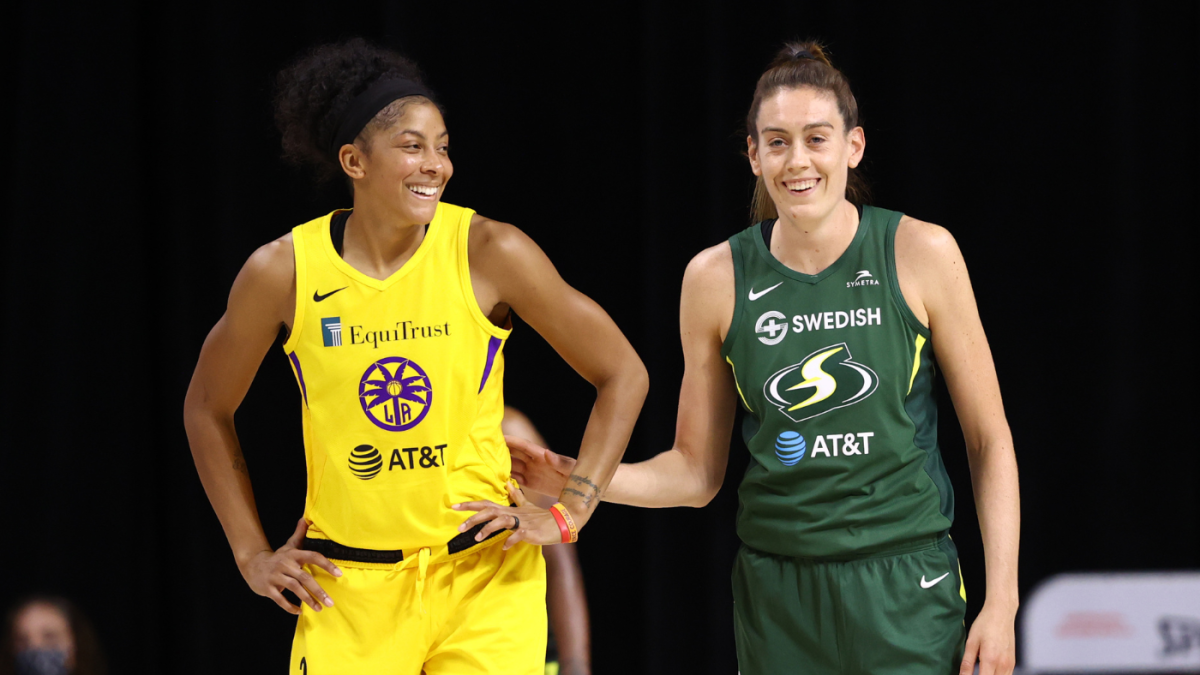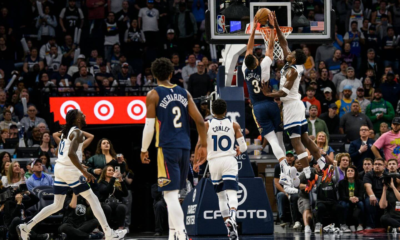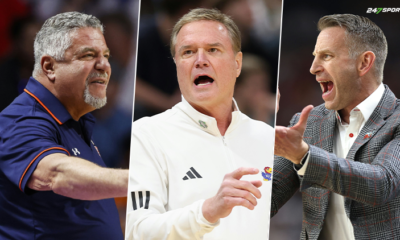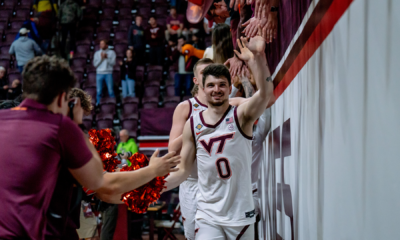Sports
Breanna Stewart and Candace Parker have ushered in a new superteam era that will forever change the WNBA – CBS Sports

Play Now
Football Pick’em
Play Now
College Pick’em
Get Ready for the NFL Season
A Daily SportsLine Betting Podcast
The WNBA has always had teams with vast collections of talent. In the first four seasons of the league’s existence, a Houston Comets squad led by Sheryl Swoopes, Cynthina Cooper and Tina Thompson completed a four-peat. Later on, the Minnesota Lynx won four titles in seven years thanks to Maya Moore, Seimone Augustus, Lindsay Whalen and, eventually, Sylvia Fowles.
Save for an experimental phase in the 2000s, the league has had 12 or fewer teams for the majority of its soon-to-be 27 seasons. Stacked rosters are an inevitiability in such a system, but due to the league’s previous limitations on player movment, they were largely built organically through the draft, with perhaps a supplemental trade or two. There may have been superteams based purely on talent, but there were no “superteams” in the way we now think of them.
All that has changed this winter.
Thanks to the most recent collective bargaining agreement, which was ratified in 2020, free agency has been entrenched as an important part of the league calendar for a few years now. But it wasn’t until this offseason that we saw a widescale orchestration of movement, driven by players, to leave their current situations and team up on a different organization.
In truth, the action started last year, when Breanna Stewart only signed a one-year deal to return to the Seattle Storm and play with Sue Bird in her final season. That decision not only meant she would hit unrestricted free agency again this year, along with a number of other stars, but crucially, it signaled that she was not committed to the Pacific Northwest long-term. Now we know why.
Stewart announced on Feb. 1 that she will sign with the New York Liberty, who earlier in the offseason acquired Jonquel Jones from the Connecticut Sun in a blockbuster deal that was initiated by the former MVP’s trade request — one that indicated her preferred destination was Brooklyn. Courtney Vandersloot then joined the party on Feb. 2 by Tweeting that she, too, will be signing with the Liberty. Those three, who, it must be noted, all played together for UMMC Ekaterinburg during the 2021 EuroLeague Women season, will now join forces in the WNBA, and do so with Sabrina Ionescu and Marine Johannes.
Out on the West Coast, similar machinations were in order. On Jan. 21, the defending champion Las Vegas Aces made a controversial trade to send two-time Sixth Player of the Year Dearica Hamby and a first-round pick to the Los Angeles Sparks. Though Hamby is pregnant and her return to play is up in the air, it was a curious decision. At least until the full extent of their plan was revealed on Jan. 28, when two-time MVP Candace Parker announced she would be signing with the Aces. There, she’ll join reigning MVP A’ja Wilson, reigning Finals MVP and former teammate Chelsea Gray, Kelsey Plum and Jackie Young.
In case you’ve lost count, these two teams now have:
It’s no surprise, then, that they are also, by far, the favorites to win the 2023 WNBA title. Per Caesars Sportsbook, the Liberty are +120, while the Aces check in at +125. The next team on the board, the Washington Mystics, is all the way down at +1200 and no other team has better odds than +2000. At this point it seems an act of God is the only thing that would prevent an Aces-Liberty Finals.
The bigger question, then, is is this good for the league?
From a general interest and marketability standpoint, the answer is clearly yes. New York is the biggest market in the league, Vegas is the defending champion, and the two respective ownership groups set a standard in terms financial commitments and desire to compete for titles. The manner in which the teams were constructed, the players involved and the clear collision course in the Finals has and will generate levels of casual-fan enthusiasm the league has been desperate to reach.
But what about everyone else? The flip side of the excitement from having two superteams is that everyone else suddenly feels irrelevant. How does that affect the other organizations and fanbases, especially in a league that already faces bigger financial and logistical issues than some of its counterparts. And how does the coming expansion fit into all of this?
As we’ve seen in the NBA when the Golden State Warriors and Cleveland Cavaliers met in the Finals four consecutive seasons, there are eventually diminishing returns with a two-team league. To that point, it’s worth noting that neither the Aces nor the Liberty feel like long-term arrangements. Both are only possible because players are reportedly taking pay cuts in order to win, and the history of sports tells us that never works forever. Meanwhile, the two players who put each team over the top, Parker and Vandersloot, are nearing the end of their careers. Parker will turn 37 this season and has publicly contemplated retirement, while Vandersloot will soon be 34.
This combination of teams and players may end up being a perfect storm for the league — a short-term experiment that creates gains in on-and-off-court interest, without dragging on long enough for the backlash to arrive. But however long this specific iteration lasts, its impact will last longer. Player movement will only become more frequent and player empowerment will only grow stronger.
© 2004-2023 CBS Interactive. All Rights Reserved.
CBS Sports is a registered trademark of CBS Broadcasting Inc. Commissioner.com is a registered trademark of CBS Interactive Inc.
Images by Getty Images and US Presswire








